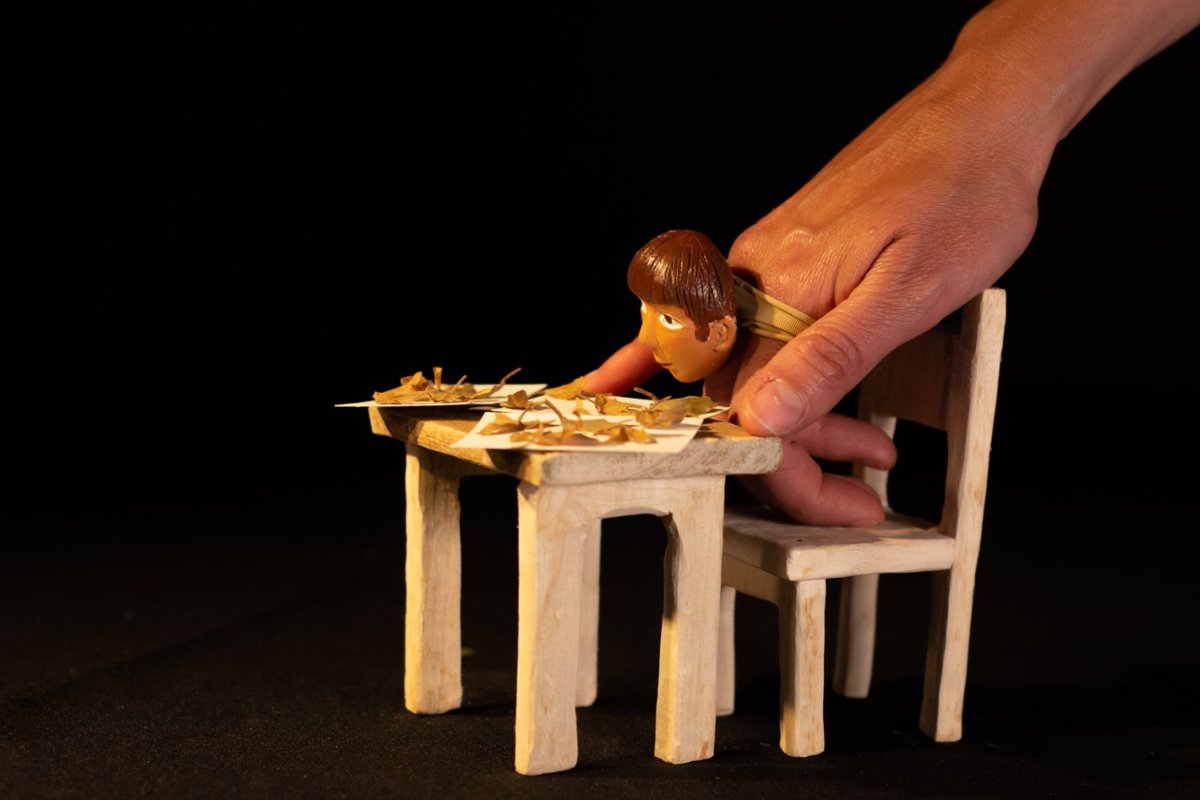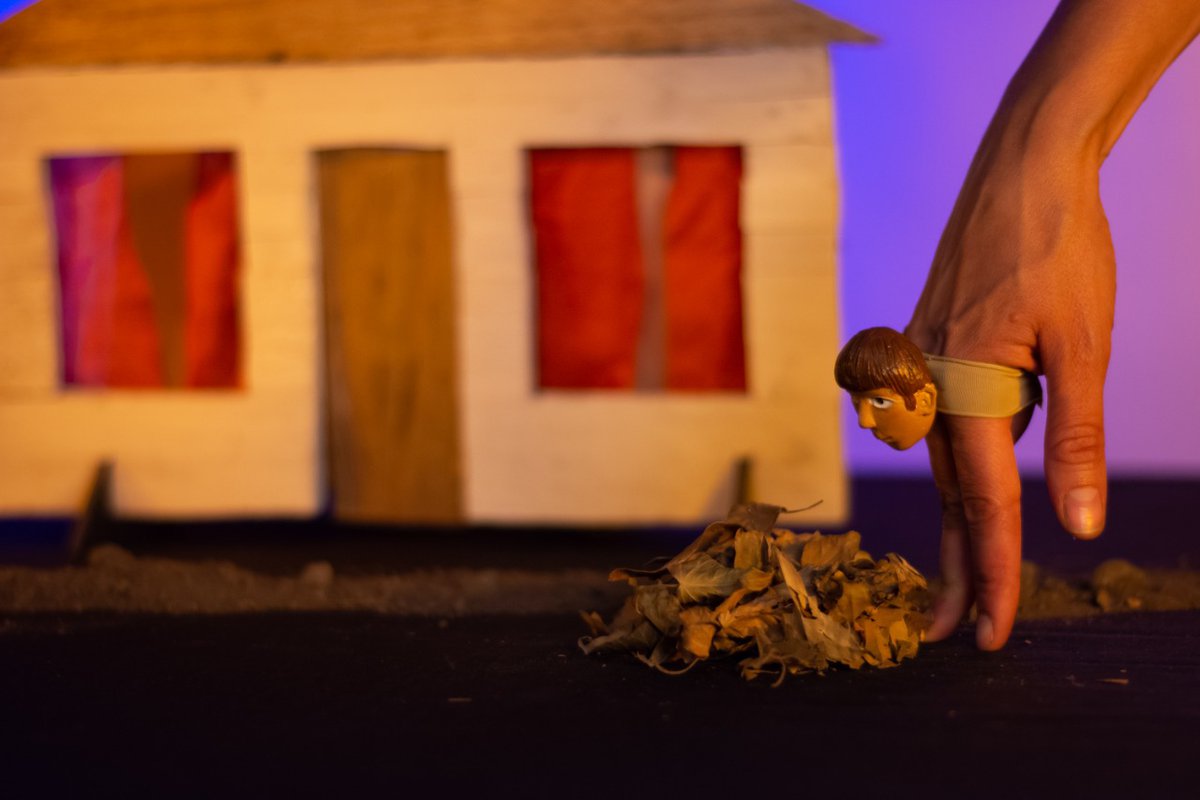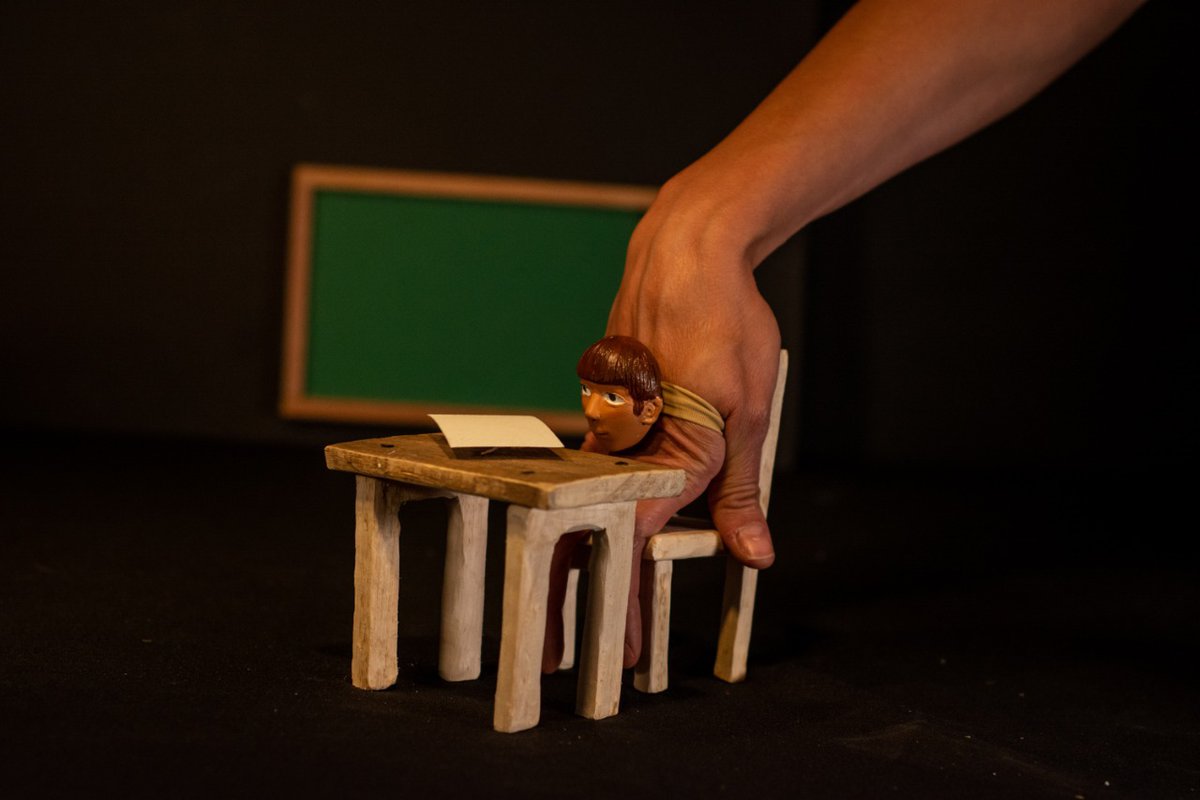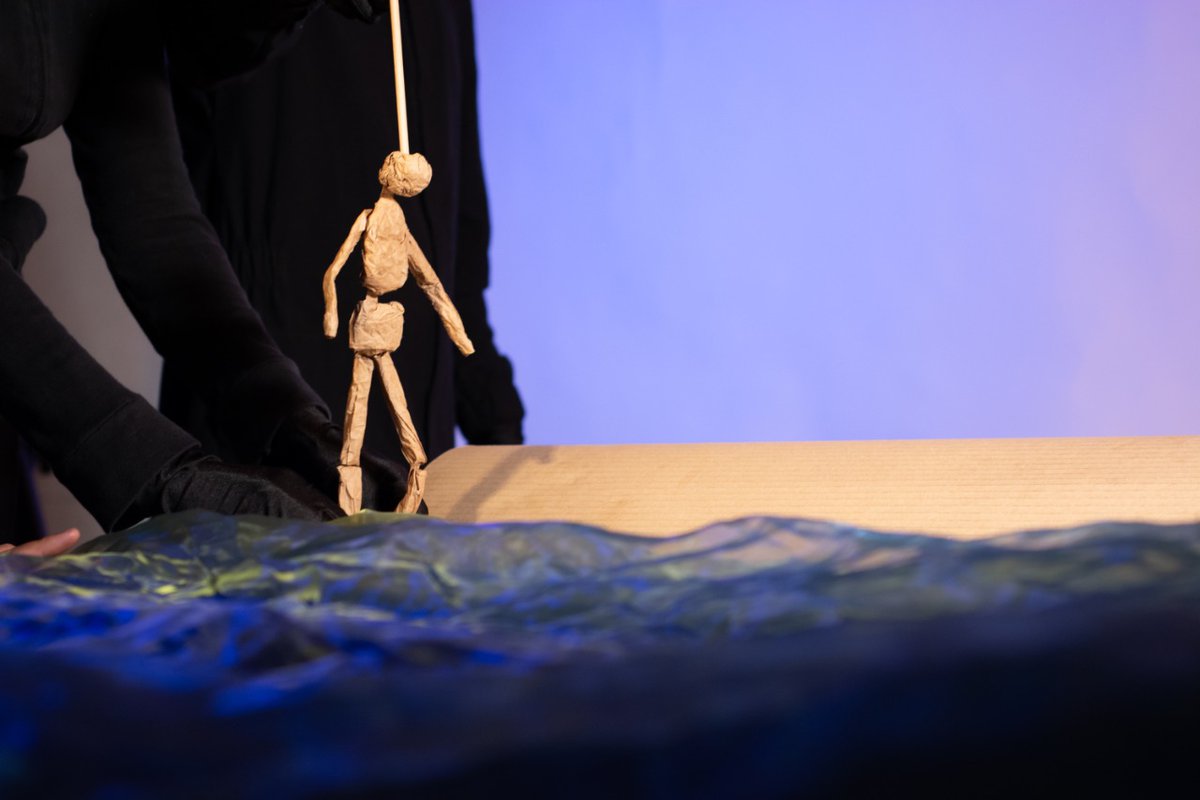Teatro de marionetas
From January 3 to 23 on Teatroamil.tv
"The aesthetic possibilities, the diversity of techniques, the lighting, the musical and sound design, go along with the story as if they were an orchestra that charm with delicious moments of inspiration."

A Production of Teatro Marote | Artistic Directors: Catalina Bize, Scarlett Carrasco Management: Daniela Orrego and Scarlett Carrasco | Artistic Production: Daniela Orrego | Original text: Scarlett Carrasco | Script: Scarlett Carrasco and Teatro Marote | Audiovisual Direction, Production and Editing: Juan Cristóbal Jurguens | Production and Staging: Valesca Díaz, Catalina Bize, Camilo Navarro, Nicolás Vergara, Daniela Orrego and Camila Cuesta | Musical Composition and Production: César Pacheco | Lighting Design and Illumination: Matías Segura | Graphic Design and Illustrations: Valesca Díaz | Photographic Registration: César Pacheco | Manipulation and Voices: Camila Cuesta, Nicolás Vergara, Camilo Navarro, Matías Segura, Daniela Orrego, Valesca Díaz, Catalina Bize and Scarlett Carrasco
Catalina Bize
Director
A Career Devoted to Puppet Theater
Catalina is an actress graduated from the Universidad Católica. She has focused her activity on the direction, creation, construction and manipulation of puppets, co-directing the plays El último pez and El niño de los fósiles, by Teatro Marote. She has also directed and designed Suplantar and Cuerpo Transferencial, by Principio Material. She is a member of the company Teatro y su Doble, directed by Aline Kuppenheim, where she has been a puppeteer for five years.
Scarlett Carrasco
Director and Dramaturge
Dedicated to Direction, Dramaturgy and Production
Scarlett is an actress, producer and dramaturge graduated from the Theater School of the Pontificia Universidad Católica de Chile in 2009. She began her career with independent projects as an actress and manager, venturing as a producer for various companies and institutions such as the Fundación Teatro a Mil and the Santiago a Mil Festival. She made her debut in the world of puppetry in 2017, by establishing the Teatro Marote company, of which she is a co-founder along with Catalina Bize (Teatro y su Doble).
Teatro Marote
The company
Dedicated to New Audiences
Teatro Marote is a family puppet company, whose main objective is to strengthen the bond of children with the performing arts, thus contributing to their intellectual and affective development. In 2016, the company premiered its first production, El último pez, funded by Fondart Regional 2017. During 2020 they began to work on their new production, El niño de los fósiles.
-Because it is a family-oriented story that not only seeks to entertain but also to empower new audiences through inspiring stories. This is the case of Gabriel, a 10-year-old boy who does not seem to fit into the mold of what is expected for a student of his age, but who nevertheless manages to shine thanks to his skills.
-Because Teatro Marote´s second production illustrates its development within the object and puppet theater scene in Chile. Their trajectory began in 2016 with their first performance, El último pez. Both plays were created after a research process that incorporates theater and other audiovisual tools.
Puppet Theater: "A set of artistic disciplines and techniques through which a specific kind of shows are created, performed and organized, characterized by the use of certain expressive material elements", according to the book Aproximación al teatro de títeres, by Argentine puppeteer Juan Enrique Acuña. Four basic techniques are usually distinguished: rod puppets, glove puppets, shadow puppets and marionettes, articulated or moved by strings. All of them have been enriched by advances in technology and various experiments. "Puppet theater is capable of representing the mistakes of society, politics, religion, the whole human endeavor", stated the Cuban theater magazine Conjunto, and that is why it is a mistake to associate puppet theatre perfomances only with children as the target audience.
Marote (Spanish)/marotte (French). This is the name given to a type of puppet for its manipulation in height. According to the World Encyclopedia of Puppetry Arts, "in its most basic version, the marote is manipulated with a single rod nailed into the puppet's head", although "it can also present a double manipulation: rod and glove. Instead of placing the index finger on the head, a rod is placed instead and held with the middle, ring and little fingers, while the thumb and index are inserted into the arm of the glove". In other words, it is a puppet in which the puppet’s hands are replaced by the hands of the manipulator.
On Instagram, @catabize | @scarcarras | @teatromarote


El niño de los fósiles
By Compañía Teatro Marote | Directed by Catalina Bize and Scarlett Carrasco
- Chile
- Spanish
- 35 minutes
The story of Gabriel, a boy who makes important paleontological findings in the northern Chilean town of Los Vilos.
Gabriel is a 10-year-old boy, paleontologist by intuition and decision, passionate about fossils. Punished again and again for not fitting the standards of formal education, his unconventional ideas led him to important paleontological findings in the town of Los Vilos. Ana, who used to be his expedition partner, is now a teacher and remembers him in every class with her students. One morning, after a visit to the Museum of La Serena, the students get together in groups to carry out an activity. Using different object manipulation techniques, Ana asks them to tell Gabriel’s story, better known as "The Fossil Boy".
"The aesthetic possibilities, the diversity of techniques, the lighting, the musical and sound design, go along with the story as if they were an orchestra that charm with delicious moments of inspiration."

A Production of Teatro Marote | Artistic Directors: Catalina Bize, Scarlett Carrasco Management: Daniela Orrego and Scarlett Carrasco | Artistic Production: Daniela Orrego | Original text: Scarlett Carrasco | Script: Scarlett Carrasco and Teatro Marote | Audiovisual Direction, Production and Editing: Juan Cristóbal Jurguens | Production and Staging: Valesca Díaz, Catalina Bize, Camilo Navarro, Nicolás Vergara, Daniela Orrego and Camila Cuesta | Musical Composition and Production: César Pacheco | Lighting Design and Illumination: Matías Segura | Graphic Design and Illustrations: Valesca Díaz | Photographic Registration: César Pacheco | Manipulation and Voices: Camila Cuesta, Nicolás Vergara, Camilo Navarro, Matías Segura, Daniela Orrego, Valesca Díaz, Catalina Bize and Scarlett Carrasco
Catalina Bize
Director
A Career Devoted to Puppet Theater
Catalina is an actress graduated from the Universidad Católica. She has focused her activity on the direction, creation, construction and manipulation of puppets, co-directing the plays El último pez and El niño de los fósiles, by Teatro Marote. She has also directed and designed Suplantar and Cuerpo Transferencial, by Principio Material. She is a member of the company Teatro y su Doble, directed by Aline Kuppenheim, where she has been a puppeteer for five years.
Scarlett Carrasco
Director and Dramaturge
Dedicated to Direction, Dramaturgy and Production
Scarlett is an actress, producer and dramaturge graduated from the Theater School of the Pontificia Universidad Católica de Chile in 2009. She began her career with independent projects as an actress and manager, venturing as a producer for various companies and institutions such as the Fundación Teatro a Mil and the Santiago a Mil Festival. She made her debut in the world of puppetry in 2017, by establishing the Teatro Marote company, of which she is a co-founder along with Catalina Bize (Teatro y su Doble).
Teatro Marote
The company
Dedicated to New Audiences
Teatro Marote is a family puppet company, whose main objective is to strengthen the bond of children with the performing arts, thus contributing to their intellectual and affective development. In 2016, the company premiered its first production, El último pez, funded by Fondart Regional 2017. During 2020 they began to work on their new production, El niño de los fósiles.
- Porque es una historia de carácter familiar que no solo busca entretener, sino también empoderar a las nuevas audiencias a través de historias inspiradoras, como lo es la historia de Gabriel, este niño de 10 años que parece no calzar en los moldes de lo que se espera para un estudiante de su edad, pero que sin embargo logra brillar gracias a sus habilidades.
- Porque en esta, su segunda creación, Teatro Marote demuestra su crecimiento dentro de la escena del teatro de objetos y marionetas en Chile, un trabajo que comenzó en 2016 con su primera obra, El último pez. Ambos, montajes nacidos luego de un proceso de investigación que incorpora teatro y otras herramientas audiovisuales.
Teatro de marionetas: También llamado teatro de títeres o teatro de muñecos, es definido como “un conjunto de disciplinas artísticas y técnicas mediante las cuales se crea, realiza y organiza una especie peculiar de espectáculos, caracterizados por el uso de ciertos elementos materiales expresivos”, según el libro Aproximación al teatro de títeres, del titiritero argentino Juan Enrique Acuña. Se suelen distinguir cuatro técnicas básicas: títeres de varilla, de guante, de sombra y las marionetas, articuladas o movidas por hilos. Todas ellas han sido enriquecidas a partir de los avances de la tecnología y de diversas experimentaciones. “El teatro de títeres es capaz de representar los errores de la sociedad, de la política, de la religión, del quehacer humano todo”, se apunta en la revista teatral cubana Conjunto, y de ahí que sea un error asociar este tipo de espectáculos solo con el público infantil.
Marote o marotte: Se llama así a un tipo de títere de manipulación en elevación. Según la World Encyclopedia of Puppetry Arts, “en su versión más básica, el marote se manipula con una única varilla clavada en la cabeza del títere”, aunque “también puede presentar una doble manipulación, de varillas y de guante. En lugar de colocar el índice en la cabeza, se coloca en esta una vara que se sujeta con el dedo corazón, el anular y el meñique, mientras que el pulgar y el índice se introducen en el brazo del guante”. En otras palabras, se trata de una marioneta en que las manos del muñeco son sustituidas por las manos del manipulador.
En Instagram, @catabize | @scarcarras | @teatromarote
COLABORA






